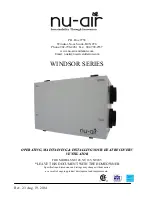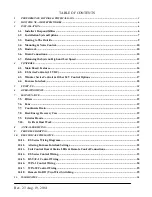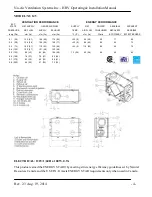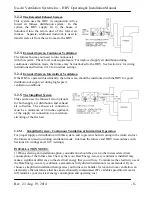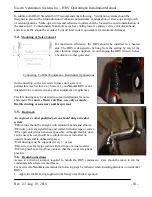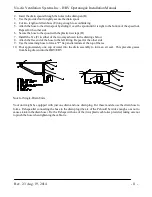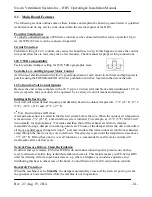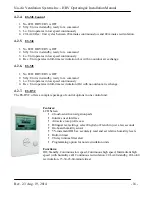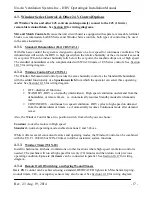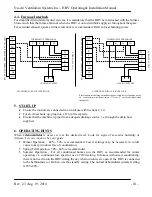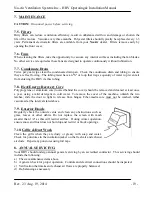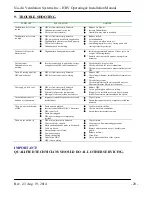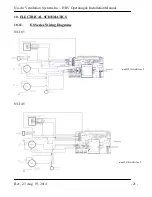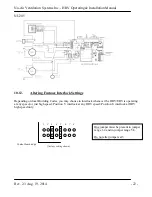
Nu-Air Ventilation Systems Inc. - HRV Operating & Installation Manual
Rev. 2.3 Aug. 19, 2014
- 8 -
3.2.2.
The Extended Exhaust System
This system uses the HRV in conjunction with a
forced air furnace distribution system. In this
system the HRV supply air to the house is
introduced into the return duct of the forced air
furnace. Separate, additional ductwork is used to
transfer stale air from the wet rooms to the HRV.
3.2.3.
Extended System, Continuous Ventilation
The furnace fan may not need to run continuously
with this system. Check local code requirements. For improved supply air distribution during
continuous ventilation mode, the furnace may be interlocked to the HRV. See Section 4.4 for wiring
instructions and Section 10.12 for interlock settings.
3.2.4.
Extended System, Intermittent Ventilation
If the HRV is operated intermittently, the furnace fan should be interlocked with the HRV for good
distribution of supply air during high-speed
ventilation conditions.
3.2.5.
The Simplified System
This system uses the furnace's return plenum
for both supply air distribution and exhaust
air collection. The exhaust air connection
must be a minimum of 40 inches upstream
of the supply air connection to avoid short-
circuiting of the fresh air.
3.2.5.1.
Simplified System - Continuous Ventilation & Intermittent Operation
For proper supply air distribution with this system, and to prevent short circuiting in the return air duct,
the furnace fan must run during ventilation mode. Interlock the furnace and HRV in accordance with
Sections 4.4 (wiring) and 10.12 (settings).
INSTALLATION NOTES
:
1) When selecting an installation option, consideration should be given to the increased electrical
consumption of the furnace fan. The way that your Heat/Energy-recovery ventilator is installed may
make a significant difference to the electrical energy that you will use. To minimize the electricity use of
the Heat/Energy-recovery ventilator, a stand-alone fully ducted installation is recommended. If you
choose a simplified installation that operates your furnace air handler for room-to-room ventilation, an
electrically efficient furnace that has an electronically commutated (EC) variable speed blower motor
will minimize your electrical energy consumption and operating cost.

